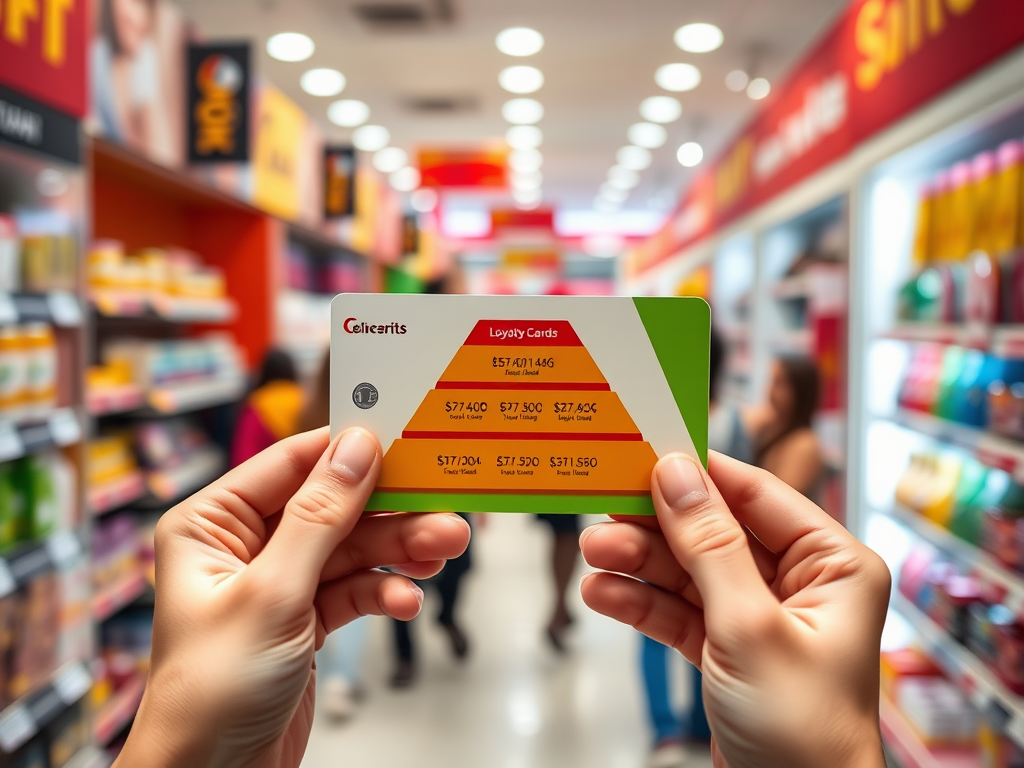
The Importance of Customer Loyalty Programs
In today’s competitive marketplace, merely providing quality products or services no longer guarantees customer retention. Enter customer loyalty programs—strategic frameworks that help businesses cultivate enduring relationships with their clientele. These programs are more than just discount systems; they are sophisticated tools designed to foster engagement, increase retention, and drive sales. When executed effectively, a loyalty program can transform the customer experience, making patrons feel valued and appreciated. In an era dominated by choices, the challenge is to create a compelling reason for customers to come back. This article delves into the multifaceted benefits and structures of loyalty programs, demonstrating their significance in modern business.
Understanding Customer Loyalty Programs

Customer loyalty programs are structured initiatives created to reward repeat customers and incentivize continued patronage. The core idea is simple: the more a customer buys, the more rewards they receive. This creates a cycle where the customer’s loyalty is recognized and rewarded, thereby enhancing their connection with the brand. Various types of loyalty programs exist, from point systems to tiered memberships, each designed to meet the needs of different businesses. The goal is to turn casual buyers into dedicated advocates for your brand. Ultimately, these programs aim to create a mutually beneficial relationship where both parties win.
Benefits of Implementing a Customer Loyalty Program

When businesses implement a customer loyalty program, they unlock a plethora of advantages that significantly affect their bottom line. One of the most compelling benefits is enhanced customer retention, which is critical in retaining your existing customer base. Retaining customers is not only more cost-effective than acquiring new ones, but it also creates a stable revenue stream. According to various studies, loyal customers are likelier to make repeat purchases and recommend your product to others. Moreover, loyalty programs can also lead to increased sales and revenue: it’s a simple logic that devoted customers often spend more over time. Hence, investing in such programs proves beneficial not just in customer relationships but also for financial growth.
Enhanced Customer Retention
Customer retention is essential in a thriving business, and loyalty programs can significantly enhance it. Brands that prioritize relationships and loyalty acquire a significant competitive edge. This is achieved through emotional connection and a sense of belonging among customers, which keeps them engaged. A structured loyalty program can lead to a 5% increase in customer retention, translating to a 25% to 95% increase in profits according to market research. The future of any business hinges on the ability to retain customers who consistently choose your brand over others.
Increased Sales and Revenue
Beyond retention, loyalty programs often lead to increased sales. Customers enrolled in a loyalty program tend to buy more frequently and in larger quantities. They also tend to explore various offerings, which elevates the average basket size. Businesses can leverage data from these programs to understand buying patterns and tailor offerings accordingly. For example, personalized promotions based on past purchase data can drive additional sales, enabling brands to meet customer needs effectively. Thus, implementing a robust loyalty program can transform customer insights into increased revenue.
Types of Customer Loyalty Programs
Understanding the types of customer loyalty programs available is crucial for businesses aiming to select the right model for their needs. Here are some popular formats:
- Points-Based Programs: Reward customers with points for every purchase, which accumulate and can be redeemed for discounts or free goods.
- Tiered Loyalty Programs: Customers move up tiers based on their spending, with each tier offering exclusive benefits, thus encouraging more purchases.
- Subscription Services: Customers pay a fee for ongoing perks, such as free shipping, early access to sales, or exclusive content.
In the table below, we illustrate the key characteristics and examples of these programs:
| Program Type | Characteristics | Examples |
|---|---|---|
| Points-Based Programs | Accumulation of points for purchases; redeemable for rewards | Starbucks Rewards, Sephora Beauty Insider |
| Tiered Loyalty Programs | Different levels of perks based on customer spending | Hilton Honors, Amazon Prime |
| Subscription Services | Flat fee for exclusive services or products | Netflix, Dollar Shave Club |
How to Create an Effective Loyalty Program
Establishing a successful loyalty program requires a thoughtful approach that begins with defining clear objectives. Determining what you want to achieve—whether it’s boosting sales, enhancing brand loyalty, or understanding customer behavior—sets the foundation for your program. Clear goals help in designing rewards that resonate with your target audience. Additionally, the program needs to feature user-friendly structures that allow customers to grasp how they earn rewards easily. Complexity can prove to be a significant deterrent, causing customers to disengage.
Conclusion
In conclusion, customer loyalty programs are instrumental in establishing and nurturing long-lasting relationships with consumers. By providing clear benefits and recognizing customer loyalty, businesses can foster an environment of trust and appreciation. This, in turn, leads to enhanced customer satisfaction and ultimately increased profitability. Crafting an effective loyalty strategy that resonates with your audience can leverage customer data to your advantage. Therefore, considering how these programs can be tailored to meet the precise needs of your clientele is essential for any modern business looking to thrive.
Frequently Asked Questions
- What is a customer loyalty program?
A customer loyalty program is a marketing strategy designed to reward customers for their repeat business. - Why are customer loyalty programs important?
They help increase customer retention, boost sales, and provide valuable insights into customer behavior. - What types of customer loyalty programs exist?
Common types include points-based programs, tiered loyalty programs, and subscription services. - How can I start a loyalty program for my business?
Start by defining your objectives, selecting a program structure, and ensuring it’s user-friendly for your customers. - Are loyalty programs effective?
Yes, when executed well, loyalty programs can significantly enhance customer retention and increase overall sales. - How do I measure the success of a customer loyalty program?
Successful measurements include tracking customer retention rates, engagement levels, and an increase in average order values.